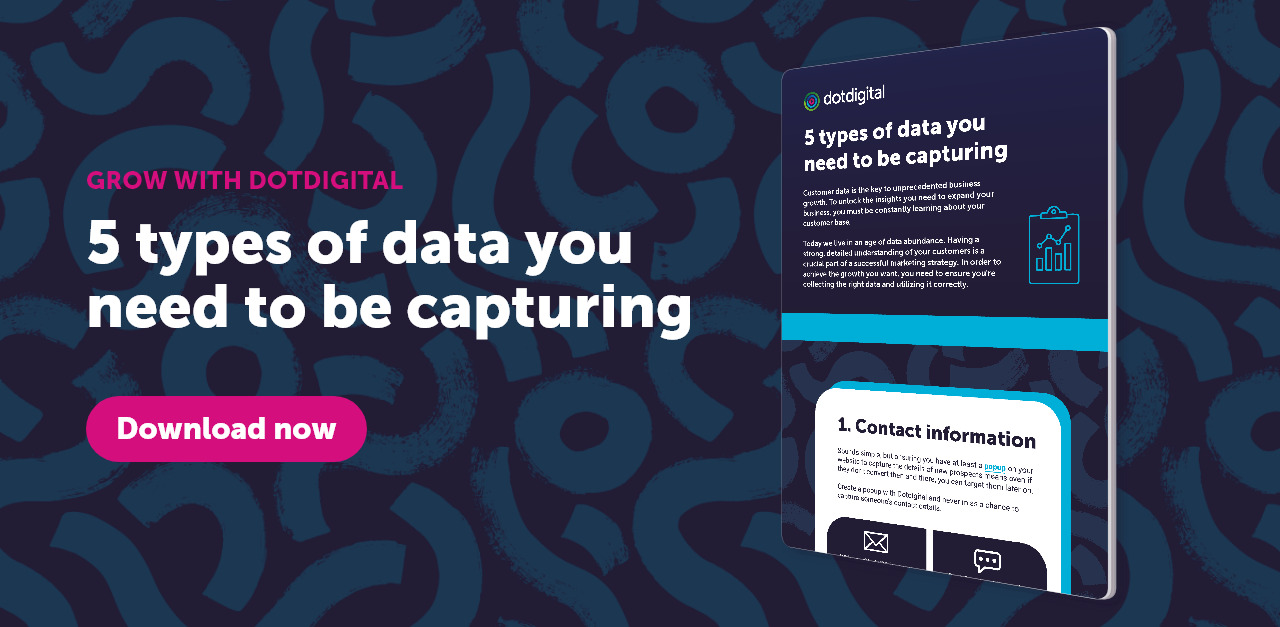

The power of preference centers

Consumer attitudes to data have changed in recent years. With the increasing levels of personalization, sometimes unnerving behavior tracking, and data breaches hitting headlines, people are more aware of the value their personal data holds and are increasingly cautious about handing it over.
The rise of responsible marketing applies to customer data too. Customers need to trust your brand will treat their data with respect, and crucially, won’t sell it on to third parties. This shift in consumer behavior is reflected in updates from some of the biggest names in the digital world. Apple’s iOS 15 update was put in place to protect the personal data of Apple users, similarly Google have announced that Chrome will be removing third party cookies in 2023 and not replacing them with anything similar so as to respect and respond to consumers’ growing desire for privacy.
With data privacy such a hot topic for consumers, how can you adjust your email marketing to meet this need? Enter preference centers.
What is a preference center?
A preference center is just what it sounds like, a place where consumers can let you know their preferences. Their interests, how often they’d like to be contacted, their preferred channel and so on. We keep talking about human to human marketing, this is because we need to remember there’s a person at the other side of our communications, and the easiest way to find out what they want, and therefore will respond to, is to ask them. It’s that simple.
What makes a good preference center?
Like a one-to-one with thousands of subscribers, a good preference center shows that you’re a brand that cares about your customers’ experience. You want to get to know them, so that you can take that data and work to ensure their experience is a positive one.
Most unsubscribes are due to email frequency or irrelevant content. By allowing your subscribers to determine this themselves you can be sure to drastically reduce your unsubscribes. When implementing a preference center, be sure to show it to consumers at the point of sign up, and have it visible in your emails. Allowing subscribers to reduce and tailor the emails they receive from you will cut down on those blanket unsubscribes.
By discovering what your customers want, you can easily tailor your marketing efforts to meet their needs. The more you meet their needs, the more likely they are to convert. And the more they convert, the healthier your bottom line is.
A preference center should allow subscribers to:
- Share the frequency they are most comfortable with e.g. daily, weekly or monthly
- Inform brands about areas of interest such as departments, e.g. dresses and knitwear
- Identify the channel they prefer to hear from brands on, e.g. email, SMS, or WhatsApp
A smart preference center is a massive data-gathering tool. So, while you’re letting customers tailor their experience, don’t forget to collect the data you need to create personalized email perfection.
How to utilize these preferences
Once you have this valuable insight into your customers’ preferences, utilize what you know to segment your content. There’s no point asking people what they’re interested in, only to ignore it. Utilize segmentation to make this easier. Segments allow you to create segments of people in your database based on a criteria you choose, in this case their preferences.
You can then easily create content which responds to these preferences and split your content sends accordingly. You can also use dynamic content to show customers who have expressed an interest in dresses, and show others who have expressed an interest in knitwear different blocks in your email.
Epic examples of perfect preference centers
Preference centers can be shown to shoppers in a number of different ways. Whether you decide to collect this information with newsletter sign-up, during the welcome email or as part of their account set-up, these examples should be enough to get you thinking creatively about your data capture.
Science in sport

Sports nutrition brand, Science in Sport, starts its preference collection simply. Using a sign-up incentive, it makes it clear that shoppers will benefit right from the beginning of this relationship. The brand also uses the opportunity to gather its first preference from customers. By asking “What is your preferred sport?”, the brand is able to use this information to send products specifically associated with running, cycling, or triathlons.
You don’t always need to collect every piece of information immediately. By gradually collecting customer information in the same way as Science in Sport, you don’t risk overwhelming your audience, and potentially ruining their experience.
Spotify
Spotify, on the other hand, allows customers to control the content they receive on an account level.

Once an account has successfully been created, customers are able to choose what they hear about. For each topic, listeners can also choose whether these communications come in the form of an email or a push notification. By diversifying its marketing channels, Spotify is increasing its chances of successful engaging customers.
MATCHESFASHION

To ensure customers don’t miss their chance to build customer experience, MATCHESFASHION uses its welcome program to push preferences to be submitted.

This preference center not only outlines what each newsletter covers but also states the day that it’ll land in customers’ inboxes. This helps build anticipation for the latest announcements and product launches. It also gives shoppers the opportunity to follow their favorite fashion designers. This information can then be used to deliver personalized edits every Monday and Friday as part of the ‘WOMENSWEAR JUST IN’ subscription.
MATCHESFASHION also goes on to confirm whether customers would be interested in receiving marketing via phone and post, as well as membership to its loyalty program.
The overall result: endless opportunities for shoppers to personalize their experience.
J. Crew

Don’t miss a single chance to let customers tell you what they want. J. Crew doesn’t.
In fact, when customers click ‘unsubscribe’ in email, J. Crew gives shoppers a final opportunity to tailor its communications. This offers a chance to save the relationship. Customers can either choose to adjust the frequency of their emails or specify the products they would rather hear about.
It’s what you do with the data that counts
The secret to successful marketing is all about the quality of the data you have. The better the data you have, the better the experience you can build with your customers.
By creating intelligent, personalized journeys for customers and putting the customer first, you’re creating an engaged fanbase, dedicated to your brand.
Contents
Natasha Lainsbury

5 types of data you need to be capturing
In order to achieve the growth you want, you need to ensure you’re collecting the right data and utilizing it correctly.
We’re sharing 5 types of essential data you should be capturing, plus how to capture and use it effectively to better inform your marketing campaigns and achieve your goals.
Get your copyStay on top
Get the latest and greatest marketing insight delivered to you weekly
Your email address will be handled in accordance with our Privacy Policy. We gather data around email opens & clicks using standard technologies including clear gifs to help us monitor and improve our newsletter.

